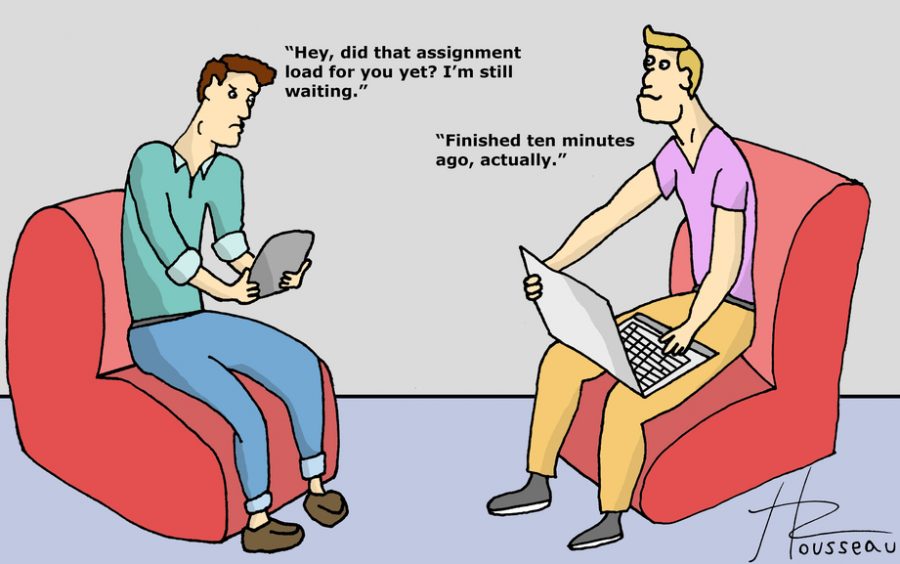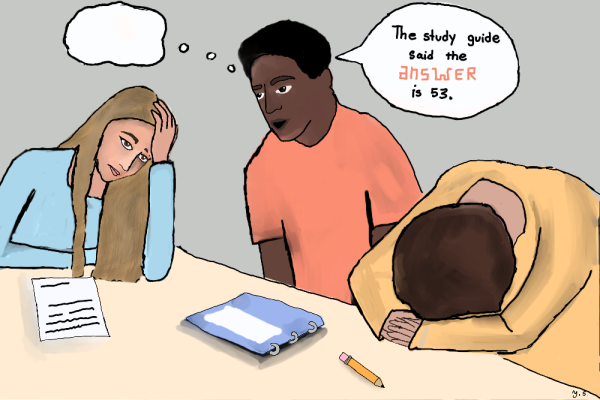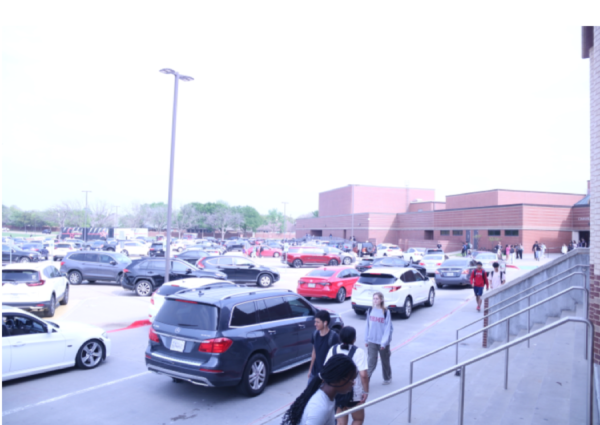New technology trend emerges
CHS students’ iPad use fluctuates
Your fingers furiously punch at the iPad screen as you finish typing the last few sentences of an essay. The bell will ring in another minute and you need to submit this assignment. You watch your friends with laptops begin to pack their bags as they have already finished.
For many Coppell High School students, this situation is all-too-familiar.
Beginning in the 2013-14 school year, CHS has provided students with individual iPads because technology is an integral part of curriculum in and out of the classroom.
Requirements range from watching videos and completing interactive lessons to accessing notes and submitting assignments to a learning management system, Schoology, in a timely manner. Laptops are becoming more prevalent, but iPads continue to have a lasting impact on the student body.
CHS assistant principal Melissa Arnold has observed the changing role of technology in recent years on campus.
“We’ve seen an increase in kids bringing personal computers,” Arnold said, “When I’m in a classroom and I see MacBooks, I’ll ask kids ‘Why do you prefer a MacBook over an iPad?’ and they’ll say it’s just their choice. It’s not necessarily anything different they can do, but it’s just what they have.”
She also predicts future trends by explaining the role that parents play in a child’s technology.
“As years go by, parents are more invested providing resources, because they see the benefits of having technology.” Arnold said. “Technology is a tool which allows beneficial learning experiences to come to life.”
Leadership corps teacher Chad Rakestraw provides a choice for students’ use of technology.
“It’s pretty vital [to bring technology to class], because they do independent study research.” Rakestraw said. “[The students] can always do whatever they need on a computer as well [as an iPad]. Anything they can access the Internet with and also use apps like Evernote or other organizational apps.”
A drawback of using iPads is not being able to use Microsoft programs. Science courses like Physics and Biology are lab-based because of College Board’s requirements; thus, students often complete post-lab analysis using Excel.
Robert Gribble, AP/IB Physics I and Physics C teacher, has specific classroom expectations regarding Excel.
“If you have a large data set and you want to analyze it quickly, you can basically model the data in Excel,” Gribble said. “[Excel] graphs for you immediately. [The students] should try to have it [a laptop] in class so they can make a prediction and quickly test it and modify it.”
Sophomore Sneha Korlakunta uses Excel in AP Biology.
“I prefer to use my laptop for statistical tests,” Korlakunta said. “You can only use Google Sheets on the iPad, but it is not the same thing. Having my laptop was very handy when we were first learning about it [Excel] because I could follow along in class.”
Sophomore Divya Ruikar has concerns with the limited presentation capabilities of iPads.
“iPads are not compatible with programs like Weebly, which I use to make websites.” Ruikar said. “At home, I can finish faster by working on a desktop.”
Although advantageous to learning, bringing a laptop to school daily is not a feasible option for everyone. Some possible alternatives could include students making arrangements to arrive before or after school and use the computers available in the library or blended labs.
Teachers can book a laptop cart or computer lab for the days they know the students will have to work on a computer.
iPads are valuable and necessary for curriculum and provide a unique learning experience on campus, but other forms of technology are becoming more prevalent amongst the student body.
Follow Akila @akilam29.

Akila Muthukumar is a sophomore who loves writing, dancing and learning new things. You can contact her at avm7442@g.coppellisd.com.








